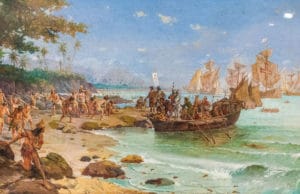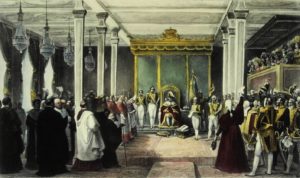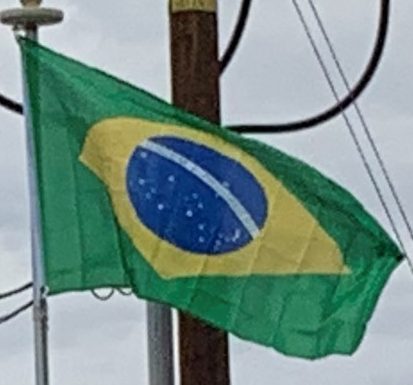
By the end of the 17th century, sugarcane exports began to decline, and the discovery of gold by bandeirantes in the 1690s would become the new backbone of the colony’s economy, fostering a Brazilian Gold Rush which attracted thousands of new settlers to Brazil from Portugal and all Portuguese colonies around the world. This increased level of immigration in turn caused some conflicts between newcomers and old settlers.
Portuguese expeditions known as Bandeiras gradually advanced the Portugal colonial original frontiers in South America to approximately the current Brazilian borders. In this era other European powers tried to colonize parts of Brazil, in incursions that the Portuguese had to fight, notably the French in Rio during the 1560s, in Maranhão during the 1610s, and the Dutch in Bahia and Pernambuco, during the Dutch–Portuguese War, after the end of Iberian Union.
The Portuguese colonial administration in Brazil had two objectives that would ensure colonial order and the monopoly of Portugal’s wealthiest and largest colony: to keep under control and eradicate all forms of slave rebellion and resistance, such as the Quilombo of Palmares, and to repress all movements for autonomy or independence, such as the Minas Conspiracy.
United Kingdom with Portugal:
In late 1807, Spanish and Napoleonic forces threatened the security of continental Portugal, causing Prince Regent João, in the name of Queen Maria I, to move the royal court from Lisbon to Rio de Janeiro. There they established some of Brazil’s first financial institutions, such as its local stock exchanges, and its National Bank, additionally ending the Portuguese monopoly on Brazilian trade and opening Brazil to other nations. In 1809, in retaliation for being forced into exile, the Prince Regent ordered the Portuguese conquest of French Guiana.

With the end of the Peninsular War in 1814, the courts of Europe demanded that Queen Maria I and Prince Regent João return to Portugal, deeming it unfit for the head of an ancient European monarchy to reside in a colony. In 1815, to justify continuing to live in Brazil, where the royal court had thrived for the prior six years, the Crown established the United Kingdom of Portugal, Brazil, and the Algarves, thus creating a pluricontinental transatlantic monarchic state. However, such a ploy didn’t last long, since the leadership in Portugal, resentful of the new status of its larger colony, continued to require the return of court to Lisbon (as postulated by the Liberal Revolution of 1820), and also groups of Brazilians, impatient for practical and real changes, still demanded independence and a republic, as demonstrated by the 1817 Pernambucan Revolt. In 1821, as a demand of revolutionaries who had taken the city of Porto, D. João VI was unable to hold out any longer, and departed for Lisbon. There he swore an oath to the new constitution, leaving his son, Prince Pedro de Alcântara, as Regent of the Kingdom of Brazil.
Independent Empire:
Tensions between Portuguese and Brazilians increased, and the Portuguese Cortes, guided by the new political regime imposed by the 1820 Liberal Revolution, tried to re-establish Brazil as a colony. The Brazilians refused to yield, and Prince Pedro decided to stand with them, declaring the country’s independence from Portugal on 7 September 1822. A month later, Prince Pedro was declared the first Emperor of Brazil, with the royal title of Dom Pedro I, resulting in the foundation of the Empire of Brazil.
